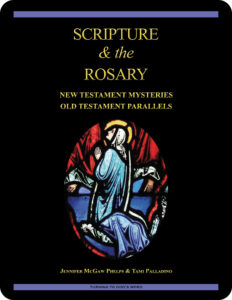Ascension
 The Solemnity of the Ascension of the Lord is the feast that marks Jesus going up to heaven following his Resurrection. Jesus’ Ascension is recorded in the Acts of the Apostles 1:6-11 (NABRE).
The Solemnity of the Ascension of the Lord is the feast that marks Jesus going up to heaven following his Resurrection. Jesus’ Ascension is recorded in the Acts of the Apostles 1:6-11 (NABRE).
In the United States, dioceses are allowed to celebrate this solemnity on either Thursday or the last Sunday before Pentecost. The Ascension of the Lord occasionally is confused with the August 15 Solemnity of the Assumption of the Blessed Virgin Mary. These feasts seem quite similar, but the difference between them becomes apparent upon closer examination.
The Latin word ascendo is composed of two parts, the prefix ad- meaning “to” or “toward,” and the verb scando meaning “I climb” or “I go up.” In this context, the prefix reinforces and emphasizes the meaning and makes the verb stronger in its compound form. We celebrate Jesus going up into heaven by his own action in much the way we would ascend a staircase to get to a higher floor.
By contrast, the Latin word assumptio means “I take” or “I receive.” This word is used to describe the Assumption or the taking up of the Blessed Virgin Mary into heaven. Mary was taken up into heaven not by her action but by God’s, in much the way that an elevator takes us up to a higher floor.
This difference in words used to describe these feasts highlights an important theological point. Jesus had the ability himself to go up into heaven as a result of his sacrifice. The Blessed Virgin Mary, in her role, did not have the same ability. Rather, she was taken up into heaven by God.
Why do you think it is that the Church chose to emphasize this difference in naming these two feasts? What does this distinction suggest about the difference between Jesus and his Mother? Consider how this distinction still is important for Christians today. How will we get into heaven?
related topics: Assumption; exalt, exult & extol; favor with God; raise up; Resurrection
you also may like our study of Scripture & the Rosary (digital only)
 Scripture & the Rosary: New Testament Mysteries, Old Testament Parallels, a 26-lesson Catholic Bible study with an imprimatur, looks at the biblical foundations of the Rosary. The study includes lessons on Pope St. John Paul II’s Rosarium Virginis Mariae (Rosary of the Virgin Mary), the Apostles’ Creed, and the Luminous Mysteries as well as the original 15 Mysteries of the Rosary. Color photographs of stained glass windows depict key scenes in the lives of Jesus and Mary. Free digital lessons rotate throughout the year on our website.
Scripture & the Rosary: New Testament Mysteries, Old Testament Parallels, a 26-lesson Catholic Bible study with an imprimatur, looks at the biblical foundations of the Rosary. The study includes lessons on Pope St. John Paul II’s Rosarium Virginis Mariae (Rosary of the Virgin Mary), the Apostles’ Creed, and the Luminous Mysteries as well as the original 15 Mysteries of the Rosary. Color photographs of stained glass windows depict key scenes in the lives of Jesus and Mary. Free digital lessons rotate throughout the year on our website.
 Click on the picture of the statue of Moses with horns (above) to learn more about Lost in Translation. A new entry is archived each Monday. Contact us to receive Lost in Translation by email every week. You may use any of the contact links on our website to ask Matthew a question.
Click on the picture of the statue of Moses with horns (above) to learn more about Lost in Translation. A new entry is archived each Monday. Contact us to receive Lost in Translation by email every week. You may use any of the contact links on our website to ask Matthew a question.
